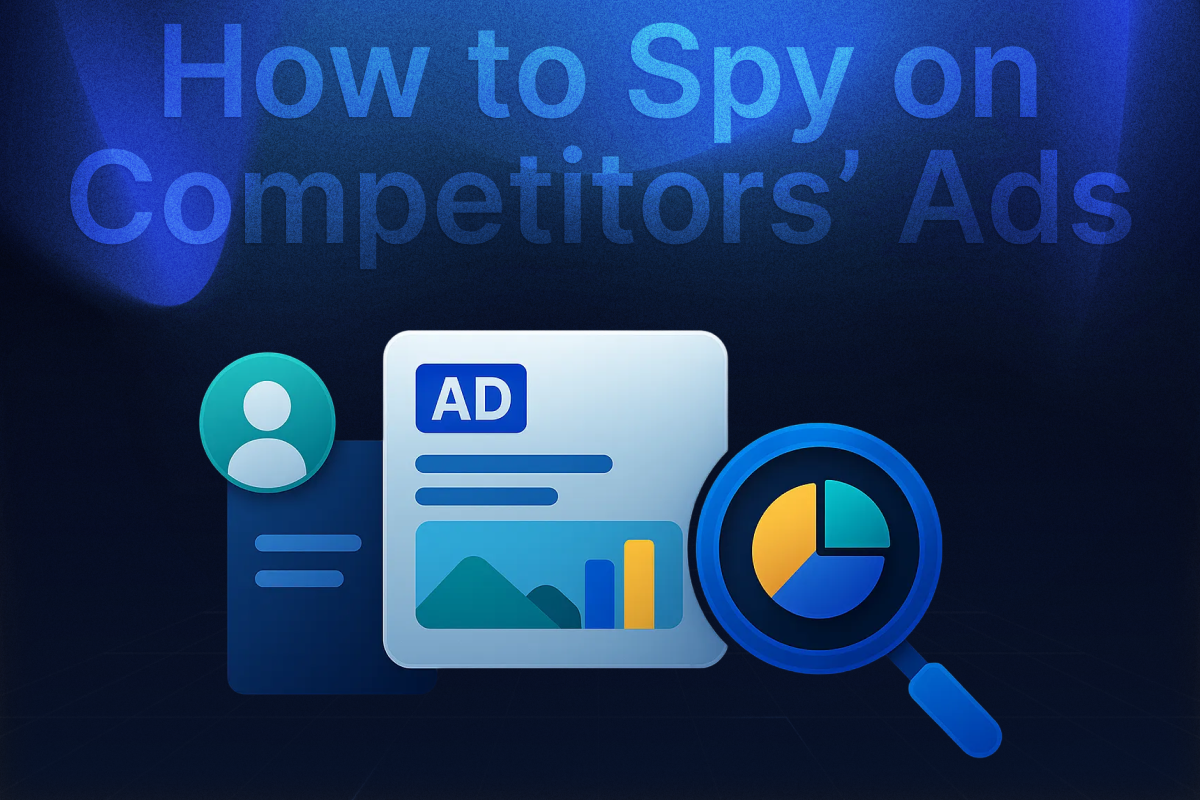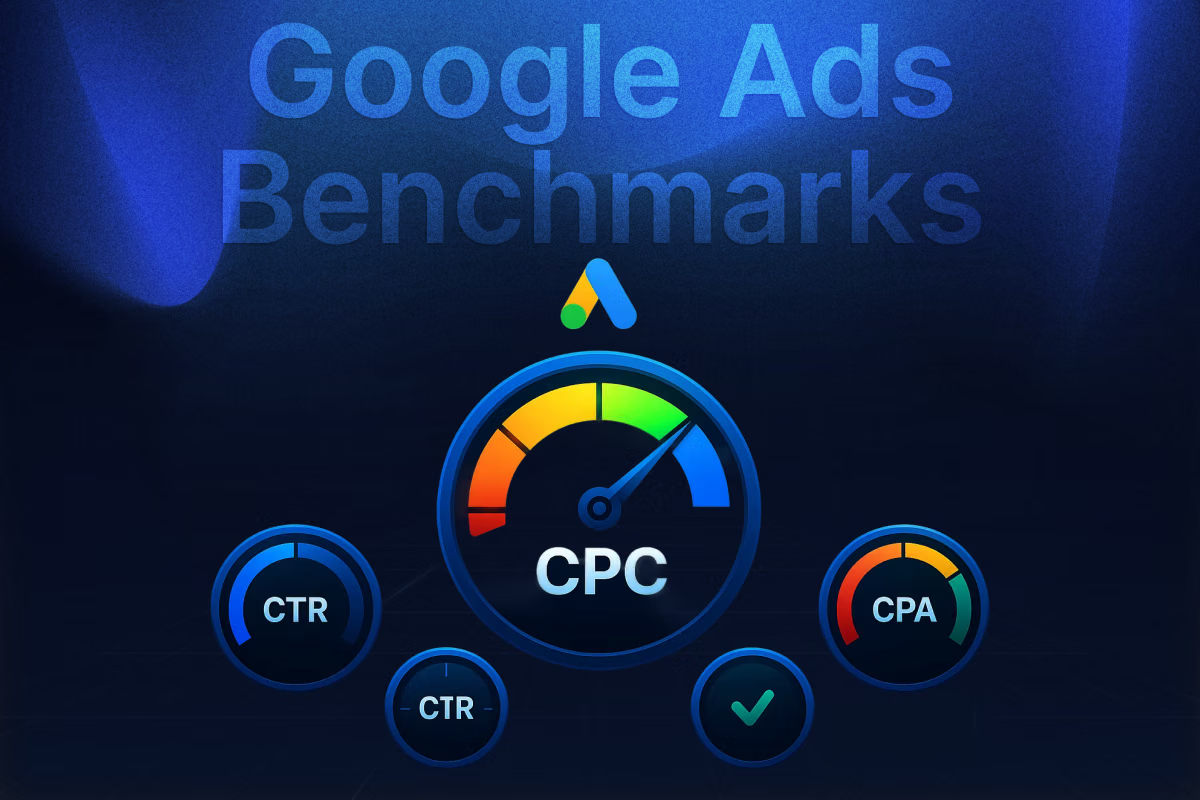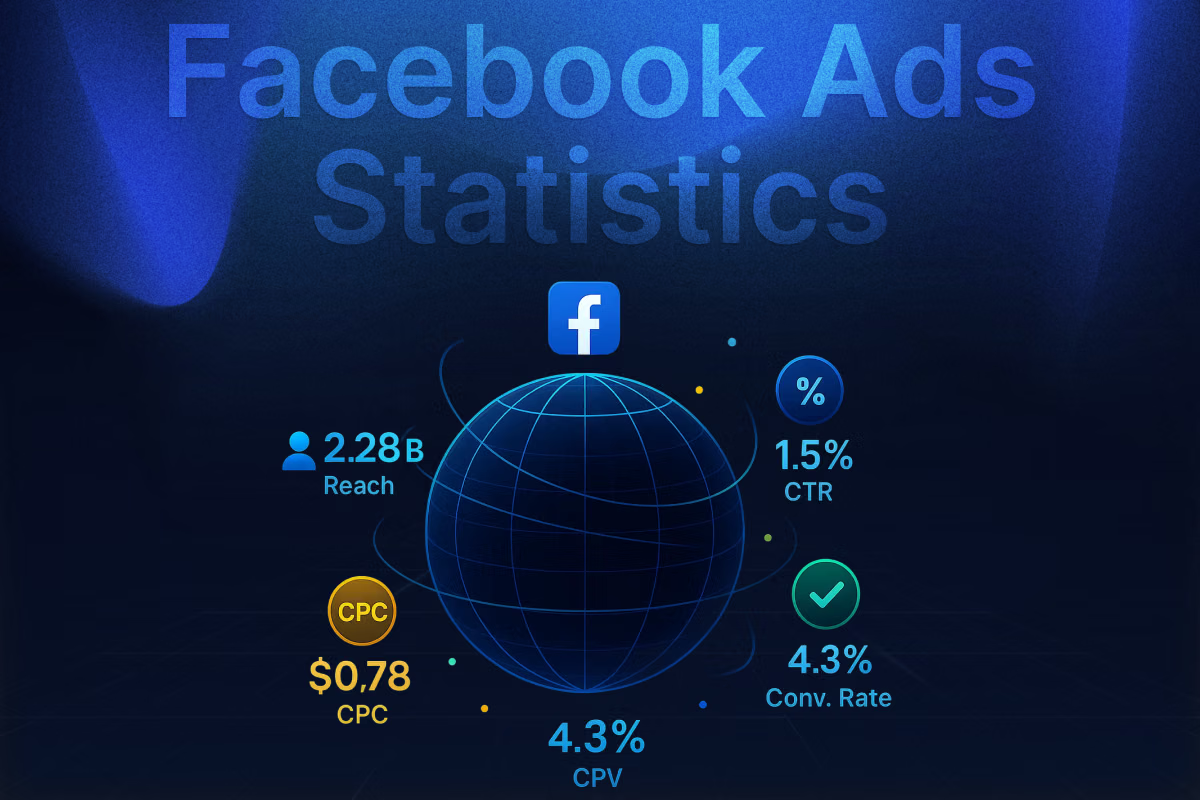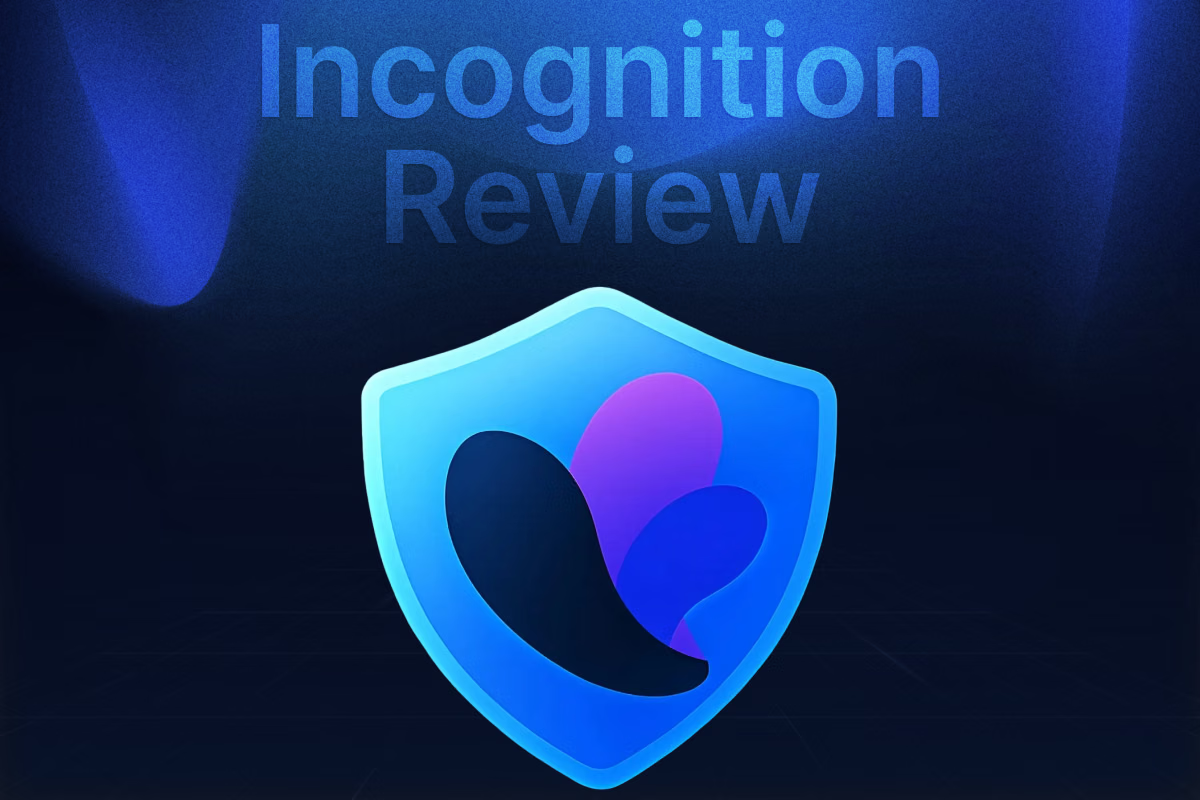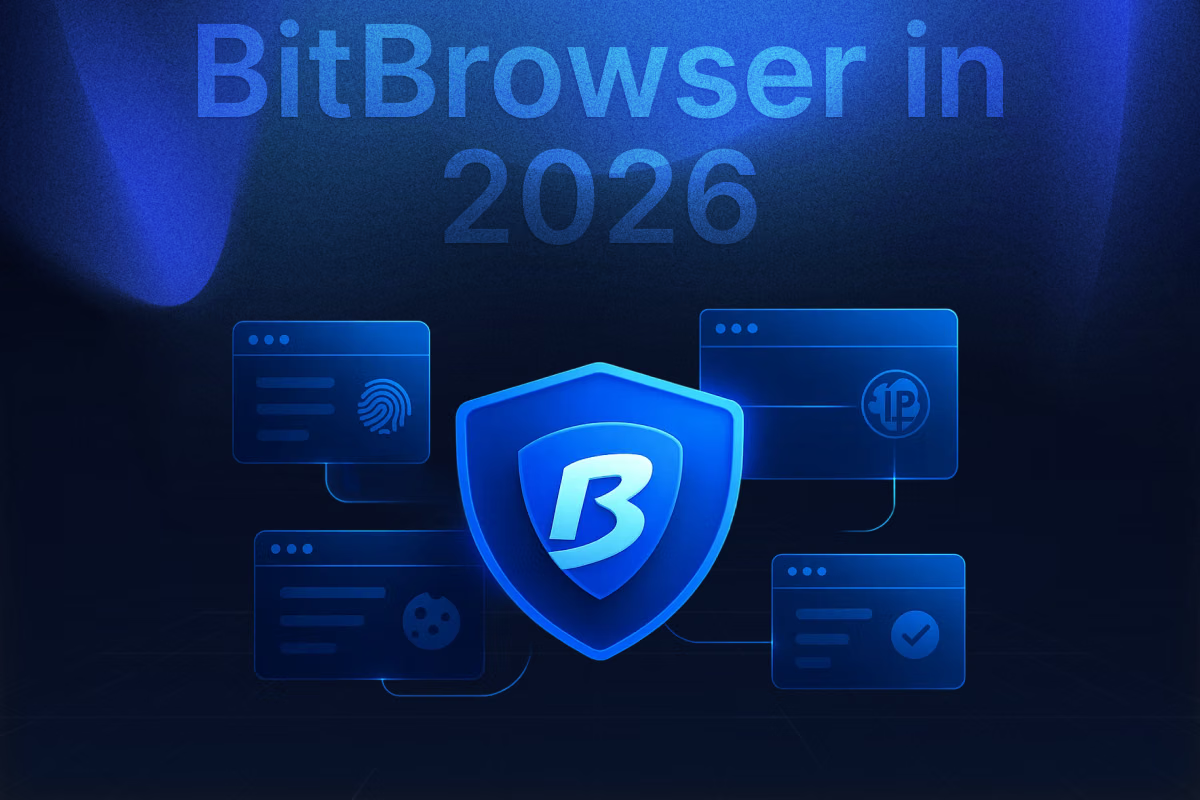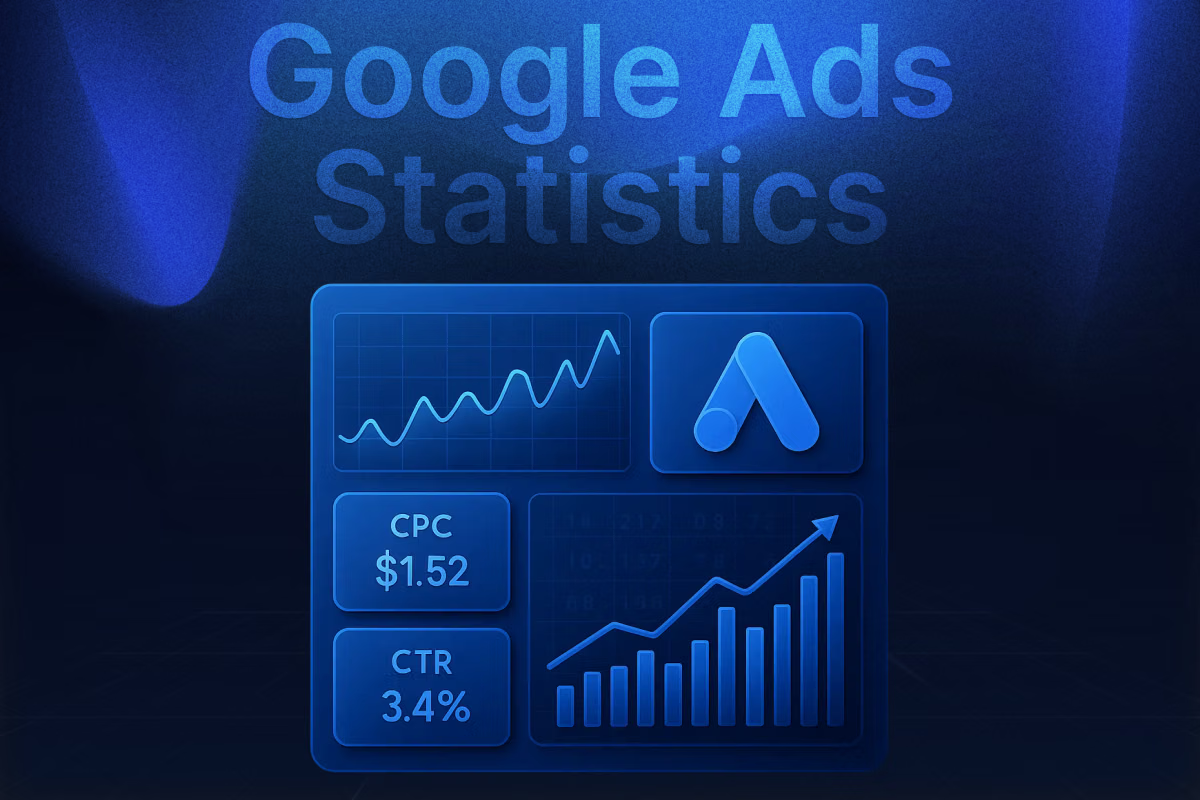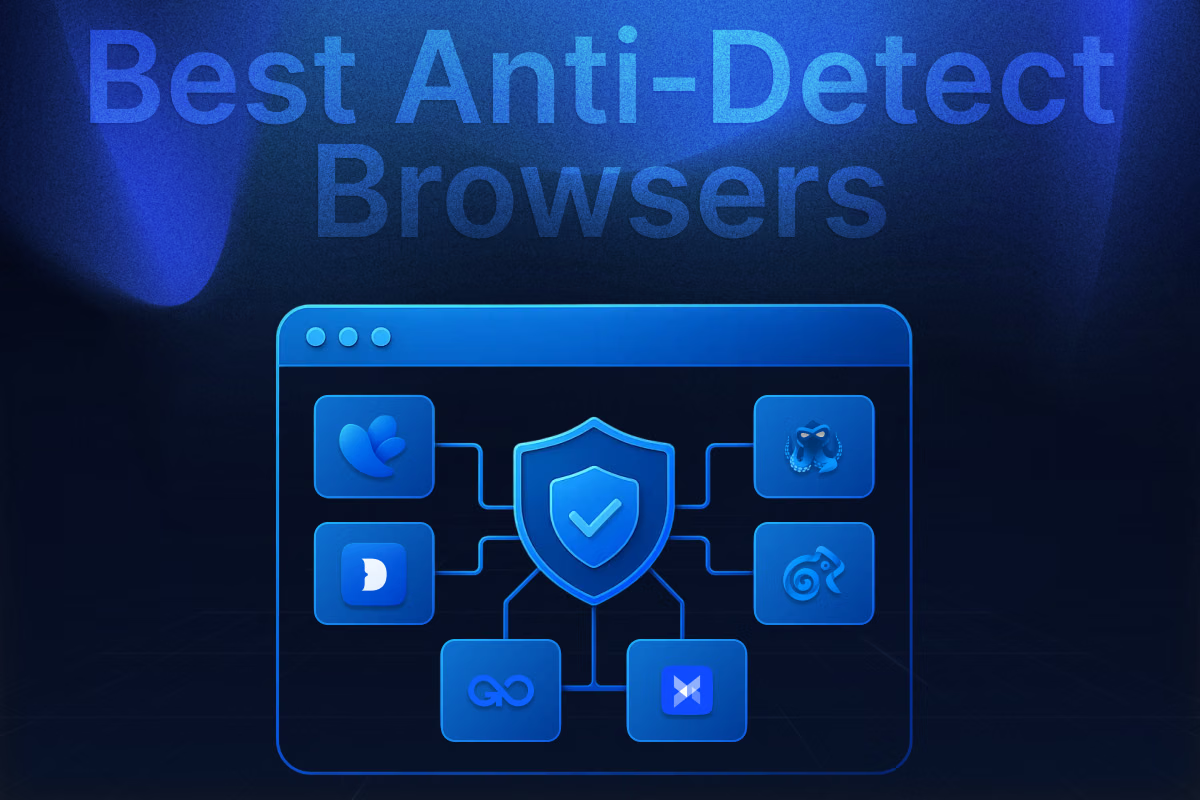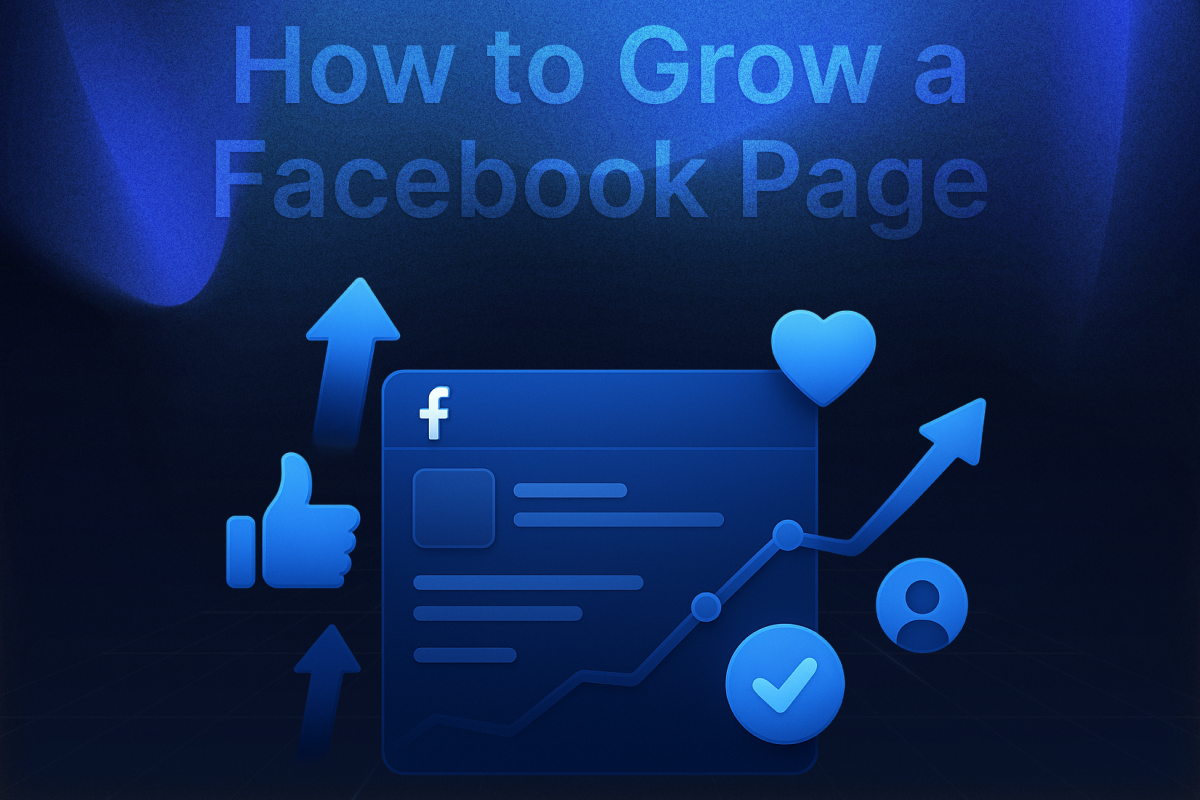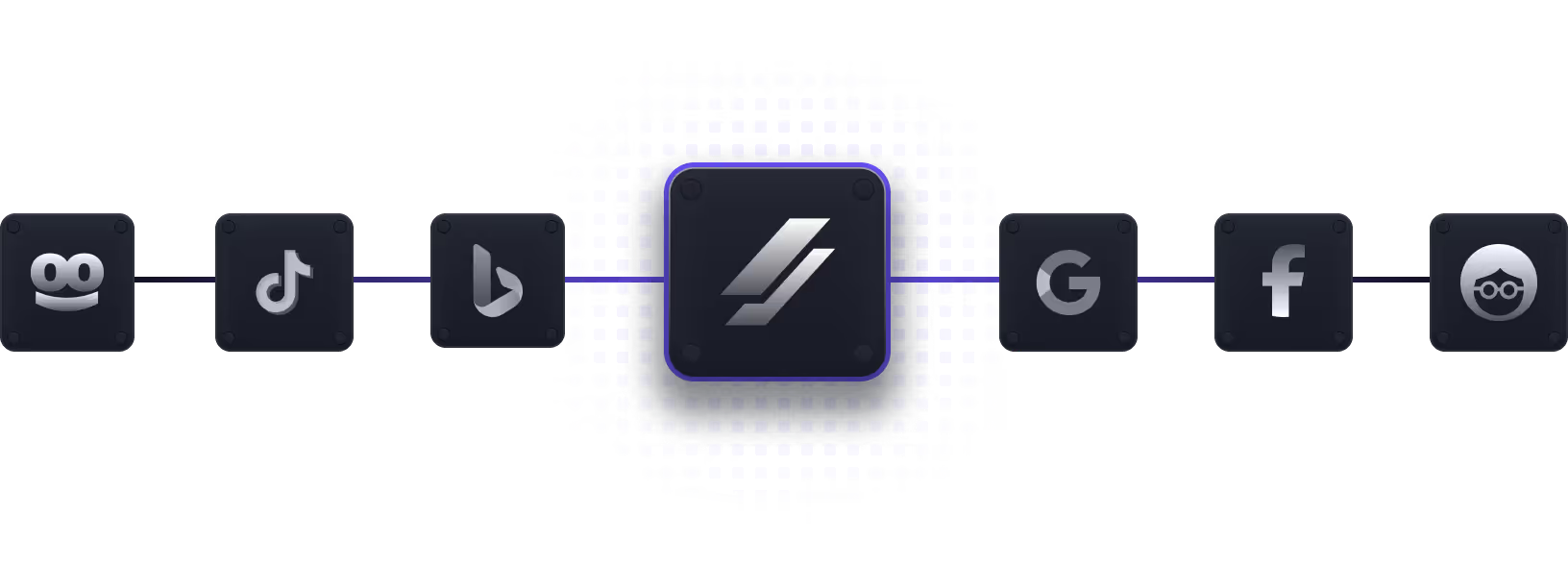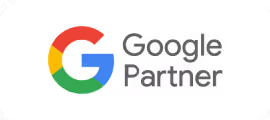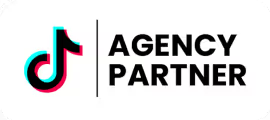In today’s hyper-competitive digital marketplace, your Facebook ads strategy can make or break your business. Facebook offers an unparalleled ecosystem for reaching potential customers. Yet, despite its reach and potential, you may be struggling to achieve real growth in your business through Facebook ads.
Why? You may be approaching Facebook advertising the wrong way. Treating Facebook ad campaigns like a slot machine instead of a strategy can result in wasted budgets, poor conversions, and the false belief that "Facebook ads don’t work anymore."
What your business needs for sustainable growth is a working Facebook ads strategy. If you’re tired of guessing, burning through budgets, or relying on luck, it’s time to upgrade your Facebook advertising game. This blog dives into the step-by-step strategies that top-performing brands use every day to dominate the feed and convert casual scrollers into loyal customers.
Why You Need a Solid Facebook Advertising Strategy
Most businesses fail with Facebook ads not because the platform doesn’t work, but because they approach it without a clear, data-driven strategy. Advertising without a roadmap leads to wasted spend, poor targeting, and minimal returns. A solid strategy helps align your goals with your audience’s behavior, ensuring that every campaign is intentional, measurable, and optimized for performance over time.
The Power of Facebook Ads for Businesses
Facebook Ads empower brands to target the right people with precision and drive measurable growth at every stage of the customer journey.
Massive reach across demographics
Facebook connects you to nearly half the world’s population. From Gen Z to Boomers, and B2C to B2B, nearly every demographic is active on Facebook or Instagram (which shares the same ad platform). This broad reach makes Facebook uniquely positioned to help businesses grow their visibility and brand recognition on a massive scale.
Advanced targeting capabilities
Facebook’s targeting options go far beyond basic demographics. You can segment your audience based on behaviors, interests, life events, income levels, job titles, and more. Features like custom audiences (people who’ve engaged with your business), lookalike audiences (people similar to your customers), and detailed targeting expansion ensure your ads reach the most relevant users.
Trackable and scalable performance
Every dollar spent on Facebook ads can be tracked across the buyer journey. From impression to conversion, you can measure ROI in real time and use this data to scale what works and cut what doesn’t. This level of attribution is invaluable for optimizing ad spend and demonstrating marketing effectiveness.
What Makes a Facebook Ad Strategy “Successful”
A successful Facebook ad strategy balances creativity with data. It’s not just about flashy visuals or catchy headlines. It’s about using analytics, psychology, and business goals to create meaningful engagement.
Clear objectives
Your campaigns should start with one crystal-clear goal. Do you want more traffic, leads, video views, or sales? Your goal determines your campaign type, budget, creative, and metrics. For example, a brand-awareness campaign will use different placements, copy, and optimization techniques than a conversion campaign.
Audience alignment
You must ensure that your messaging, creative, and offer resonate with the audience you're targeting. For instance, what works for new prospects won’t work for returning customers. A successful strategy includes detailed buyer personas and tailored content at every funnel stage.
Ongoing optimization
Success isn't static. Facebook's algorithm, your competition, and audience behavior are constantly evolving. Regular optimization, such as tweaking creatives, refining targeting, and adjusting bids, is crucial. The best marketers embrace a test-and-learn mindset, using data to fuel continual improvement.
Common Mistakes to Avoid
Even experienced advertisers can sometimes make Facebook ads mistakes that tank campaign performance. Recognizing these mistakes early can help you avoid them entirely.
Running ads without goals
Without setting a clear objective, Facebook doesn’t know how to optimize your campaign, and neither do you. Ads without purpose tend to underperform and deliver misleading data. Always define success before launching.
Targeting too broadly
Trying to reach everyone means your message won't deeply resonate with anyone. Broad targeting can quickly exhaust your budget with low-quality traffic. Narrowing your audience ensures higher engagement and better ROI.
Ignoring analytics
It’s tempting to “set and forget” ads, but failing to review performance data means you miss optimization opportunities. Metrics like cost-per-result, click-through rate (CTR), and ROAS should be reviewed weekly (or even daily) for active campaigns.
Core Components of a Successful Facebook Ad Strategy

Building a winning strategy means getting the fundamentals right. These pillars support long-term success and help structure campaigns that are easy to manage and scale.
Define Clear Campaign Objectives
Every successful campaign begins with clear intent. Objectives inform Facebook’s optimization algorithm and impact delivery. Choosing the right ad objective results in you getting the appropriate returns for your business. For example, if your goal is to increase sales, adding engagement as your primary objective will give you unsatisfactory results. Creating a customer base is best done using ‘leads’ and ‘awareness’ as your campaign objectives.
Your ad objective should reflect the specific result that matters most to your business. Having a clear understanding of what you want to accomplish will help you choose the most effective campaign objective.
As your business evolves, so will your advertising goals. Initially, you might prioritize increasing brand awareness or attracting new audiences. Later, your focus may shift toward driving sales, generating leads, or promoting event signups. Think about the key actions your ideal customers need to take to help you reach your current objectives.
Matching ad types to funnel stages
Facebook Ads funnel is a strategic sequence of campaigns designed to guide potential customers through each stage of the buying journey. It typically includes four main phases:
- Awareness (TOFU): Introduce your brand to new audiences.
- Consideration (MOFU): Engage interested users evaluating their options.
- Conversion (BOFU): Drive action from ready-to-buy prospects.
- Post-Purchase: Turn buyers into repeat customers and brand advocates.
At the awareness stage, you introduce your brand to people who have never heard of it. In the consideration phase, you engage users who are aware of your business and are actively evaluating their options. The conversion stage focuses on encouraging those who are ready to take action, such as making a purchase or signing up. Finally, the post-purchase stage aims to build loyalty and turn existing customers into repeat buyers and brand advocates.
Use engaging video or branded content for the top of the funnel, product-focused ads or blog links for the middle, and conversion-focused CTAs for the bottom. For instance, an eCommerce store may start with a lifestyle video ad, follow up with testimonials, and finally serve a discount offer to warm leads.
Examples of objective-based campaigns
A campaign with a ‘sales’ objective may be designed with the following structure:
Budgeting and Duration
Choosing the right budget for your Facebook ad campaigns depends on your business size, goals, and the stage of your marketing funnel. If you’re just starting out, it’s smart to begin with a small, controlled daily budget, typically between $5 to $20 per ad set. This allows you to test different creatives, audiences, and objectives without overspending.
As your campaigns begin to show positive results, you can gradually scale your budget by increasing spend on the best-performing ad sets. For businesses with a larger customer base or aggressive growth goals, higher budgets may be necessary to drive more conversions and expand reach quickly.
Always align your budget with the value of your goals. For example, brand awareness campaigns usually require a broader reach and can be run with a lower cost per impression, while conversion campaigns may need a higher budget to gather meaningful results. The key is to monitor performance closely, optimize regularly, and increase spending only when you're confident the ads are delivering measurable returns.
Some recommended budgeting and duration standards from Meta are given below:
Audience Targeting & Segmentation
One of Facebook’s greatest strengths lies in its advanced audience targeting and segmentation capabilities. To maximize the effectiveness of your ads, it’s crucial to reach the right people with the right message at the right time. This starts with understanding and defining your target audience in detail.
Custom, lookalike, and saved audiences
- Custom audiences are built from your own data: website visitors, email lists, app users, etc.
- Lookalike audiences help you find new people who resemble your best customers.
- Saved audiences are built from demographic and interest data and can be reused across campaigns.
Behavioral targeting
Target users based on their online behavior, like recent purchases, content engagement, or travel activity. This data allows for highly personalized messaging that increases relevance and conversions.
Exclusion filters and audience refinement
To avoid fatigue and wasted impressions, exclude audiences who have already converted or have seen the same ad too often. This also ensures new prospects get fresh content while existing leads move further down the funnel.
Crafting Compelling Ad Creatives
Your ad creative is what captures attention, sparks interest, and drives action. No matter how well-targeted your audience is or how precise your objectives are, poor creatives will lead to underperforming campaigns. Facebook is a visually driven platform, so your images, videos, and copy must work together to stop the scroll and deliver a clear message.
Text
A good copy is clear, concise, and action-oriented. Keep your message brief and direct, clearly explaining what you're offering. Start with the most important details and limit your text to two or three short sentences to ensure your audience sees the entire message.
Image and Video
Ensure your image is high-quality and visually supports the message in your text. Choose bright, contrasting colors and bold backgrounds to grab attention and stand out in the feed. Make your videos attractive and trendy to catch the viewers’ attention quickly. Types of image and video ads may be:
- Video ads drive high engagement and work well for storytelling.
- Carousel ads are perfect for showcasing multiple products or features.
- Static image ads can be effective for clear, bold offers.
Headlines
Use short, clear headlines that quickly convey the main idea of your ad, making it easy for viewers to understand at a glance.
Call to Action
Whenever possible, include a call-to-action button that prompts your audience to take a specific action important to your business, like "Book Now" or "Sign Up."
A/B testing creative elements
Run split tests with one variable changed. For example, change your headline, CTA, or image. Keep each test simple so you can clearly identify what drives performance improvements.
Best Practices for Running Facebook Ads

Running successful Facebook ads requires more than just launching campaigns; it demands a strategic approach to budgeting, structuring and ongoing optimization. Following best practices helps you get the most out of your ad spend and continuously improve your results. Knowing how to structure, launch, and manage your campaigns ensures efficiency and helps you scale what works.
Budgeting and Bidding Strategies
Budget and bidding strategies determine how efficiently your ads are delivered. Start by setting a budget that aligns with your goals and business size. For beginners it is wise to begin with smaller daily budgets to test different creatives and audiences. As you identify winning campaigns, gradually scale your budget while monitoring performance to avoid wasting money.
How to set budgets based on goals
Start with a small daily budget ($10–$50) to test creatives and audiences. As campaigns perform, increase spend slowly. For conversions, ensure your budget is at least 50x your target CPA (Cost Per Acquisition).
Manual vs. automatic bidding
- Automatic bidding lets Facebook optimize for the lowest cost per result, which is great for beginners.
- Manual bidding gives advanced users more control over maximum bids but requires more oversight.
Scaling without killing performance
When scaling a winning ad, increase budgets incrementally (10–20% per day). Alternatively, duplicate the ad set and increase budget on the clone to preserve performance.
Campaign Structuring Tips
Organization is crucial when managing multiple ad sets and campaigns. Organize your campaigns clearly using consistent naming conventions that help you quickly understand each campaign's objective audience and timeframe. Group ad sets logically by audience segments or goals to keep campaigns manageable and data easy to analyze.
Naming conventions for clarity
Use structured names like: ProductName_Objective_Audience_Date. This helps quickly identify what's working when reviewing reports or duplicating campaigns.
Ad set grouping based on goals or audiences
Segment ad sets by audience type (cold, warm, hot) or goal (lead gen, remarketing). This gives you better budget control and testing insights.
Using CBO (Campaign Budget Optimization) effectively
CBO distributes your total budget across ad sets to maximize results. It’s best used once you’ve identified high-performing ad sets and want to let the algorithm allocate spend automatically.
Optimization & Performance Tracking
Once your campaign is live, it needs continual monitoring and tweaking to maintain performance. Track key performance metrics for Facebook ads such as click through rate, cost per acquisition return on ad spend and frequency to measure how well your ads are performing. Use these insights to fine-tune your targeting creative and bidding strategies. Do not hesitate to pause or kill underperforming ads early to preserve your budget and focus on what works.
Key metrics: CTR, CPA, ROAS, frequency
- CTR (Click-Through Rate) measures engagement.
- CPA (Cost Per Action) shows cost-efficiency.
- ROAS (Return on Ad Spend) is your bottom-line metric.
- Frequency indicates how often your ad is seen. Too high can cause fatigue.
Retargeting strategies
Use retargeting to re-engage warm leads. Examples include cart abandoners, blog readers, or video viewers. Create sequences that deliver progressively stronger offers. Retargeting is a powerful tool to re-engage users who have interacted with your brand but have not yet converted. Use segmented retargeting campaigns to deliver personalized ads that encourage users to take the next step.
When and how to kill or scale ads
If performance drops (low CTR, high CPA), pause the ad. Scale winners slowly and refresh creatives to avoid ad fatigue.
Advanced Facebook Advertising Strategies

Once you have a solid foundation with your Facebook ads, it’s time to explore advanced strategies that can take your campaigns to the next level. These techniques help you reach deeper into your audience, increase engagement, and drive higher conversions using a bulletproof ad structure for your campaign.
Full-Funnel Facebook Ad Approach
A full-funnel strategy nurtures users through the buying journey. This strategy guides users through awareness, consideration, and conversion stages with targeted campaigns designed for each phase. This method nurtures prospects step-by-step, increasing the chances they will make a purchase or take another valuable action. Incorporating retargeting sequences and custom customer journeys keeps your brand top of mind and encourages ongoing engagement.
Craft messaging for each funnel stage:
- Top: Storytelling, brand video
- Middle: Problem-solving, reviews
- Bottom: Offer-driven CTAs, urgency
Retargeting sequences and custom journeys
Create sequences where viewers of one ad are shown the next step. For example, viewers of an intro video are retargeted with testimonials, and finally with a purchase offer.
Lead magnet strategies
Use free guides, webinars, or discount codes to collect emails. Nurture these leads through automated follow-ups and retargeting.
Leveraging Video Ads and Instant Experiences
Interactive formats often outperform static content. Video ads and Instant Experiences offer some of the most engaging and effective ways to connect with your audience on Facebook. Video content naturally attracts attention and holds it longer than static images, making it an ideal format for storytelling, product demonstrations, and customer testimonials. Videos allow you to showcase your brand personality and explain your value proposition in a dynamic, memorable way.
Why video performs better in feed
Videos capture attention quickly, tell stories, and keep users engaged longer. They’re ideal for building awareness and nurturing interest.
Creating fast-loading experiences
Facebook’s Instant Experiences open instantly on mobile and allow for storytelling through images, video, and CTA buttons, all in one interactive unit.
Using engagement to warm up audiences
Track who watches your videos or engages with Instant Experiences, then retarget those users with stronger conversion offers.
Using Facebook Pixel and Conversion API
Facebook Pixel and Conversion API are essential tools for tracking user interactions and measuring the effectiveness of your ad campaigns with precision. The Facebook Pixel is a piece of code installed on your website that tracks actions visitors take, such as page views, add-to-cart events, and purchases. This data helps you optimize your ads, create custom audiences, and measure conversions more accurately.
Event tracking for smarter optimization
Install the Facebook Pixel to track key actions on your site, like page views, form submissions, or purchases. This allows you to create custom audiences and optimize for real results.
Server-side tracking for data accuracy
With Apple’s iOS 14+ changes, client-side tracking is limited. Facebook’s Conversion API (CAPI) collects data directly from your server, ensuring more accurate tracking and attribution.
Measuring true ROI
Integrate Facebook Pixel and CAPI with your CRM or eCommerce platform to track revenue and calculate true return on ad spend.
How to Create a Facebook Campaign Step-by-Step
Campaign Creation Walkthrough
- Choose your campaign objective (e.g., traffic, conversions, leads).
- Set up your ad sets with audience targeting, budget, and placements.
- Design your ads by uploading visuals, writing ad copy, and selecting a CTA.
- Launch and monitor the campaign closely in the first 48 hours.
Tools That Make It Easier
- Meta Ads Manager: The core tool for building and managing campaigns.
- Facebook Business Suite: Manages posts, ads, insights, and messages across platforms.
- Creative Hub: Previews and shares mockups before campaigns go live.
Facebook Advertising Advice for Long-Term Success
To win long-term, you need more than great ads. You need sustainability and consistency.
Stay Compliant with Meta Policies
Avoid disapproved ads or banned accounts by following Meta’s rules.
- Avoid exaggerated claims (“Cure your acne in 1 day”)
- Use disclaimers for health, finance, or sensitive niches
- Follow guidelines for creative content, especially in regulated industries
Keep Testing and Learning
Digital ads evolve. Stay sharp by constantly experimenting.
- Test everything: audiences, creatives, copy, objectives
- Refresh creative every 2–4 weeks to avoid fatigue
- Track trends in performance and adapt accordingly
Combine Facebook Ads with Organic Strategy
Great ads amplify a strong brand presence.
- Use Facebook Pages and Groups to build trust
- Cross-promote on Instagram for broader reach
- Share testimonials, behind-the-scenes content, and FAQs to build a community
Boost Your Facebook Ad Campaigns with Uproas
Building your own Facebook ads strategy can seem like a huge task if you’re just starting off. Fortunately, there are solutions to make this monumental task easier. Any good ad strategy starts off better by having a whitelisted agency ad account from services like Uproas. For advertisers looking for an advance account structure, check out bm2500, a Facebook Business Manager setup designed to help scale campaigns efficiently. We can also help you manage your ad accounts with dashboards and easy-to-access chats for any questions you may have.
For many entrepreneurs getting started with their business promotion on Facebook, Uproas offers a reliable solution that can help you grow your business without having to become an expert overnight. Uproas experts will handle the legwork for you and give you tailored solutions and agency ad accounts that can help you grow your business easily and effectively.
Conclusion
Facebook ads remain a high-impact channel, but only when approached with structure and strategy. From setting clear goals and targeting the right audiences to testing creatives and tracking performance, every piece plays a role in success. As you grow, incorporate advanced tools like CAPI and full-funnel sequencing to supercharge results. Now is the time to refine your approach and start building Facebook ad campaigns that truly grow your business.
FAQs
How do I run Facebook ads successfully?
Focus on clear objectives, precise targeting, compelling creatives, and consistent optimization. Start small, test aggressively, and scale what works.
What’s the best strategy for Facebook ads in 2025?
A full-funnel approach with layered retargeting, video-first creatives, and enhanced tracking via Pixel and CAPI is key to success in 2025.
How much should I spend on Facebook ads?
Begin with $5–$20/day per campaign. Once you see positive ROI, slowly increase the budget while maintaining control through performance monitoring.



